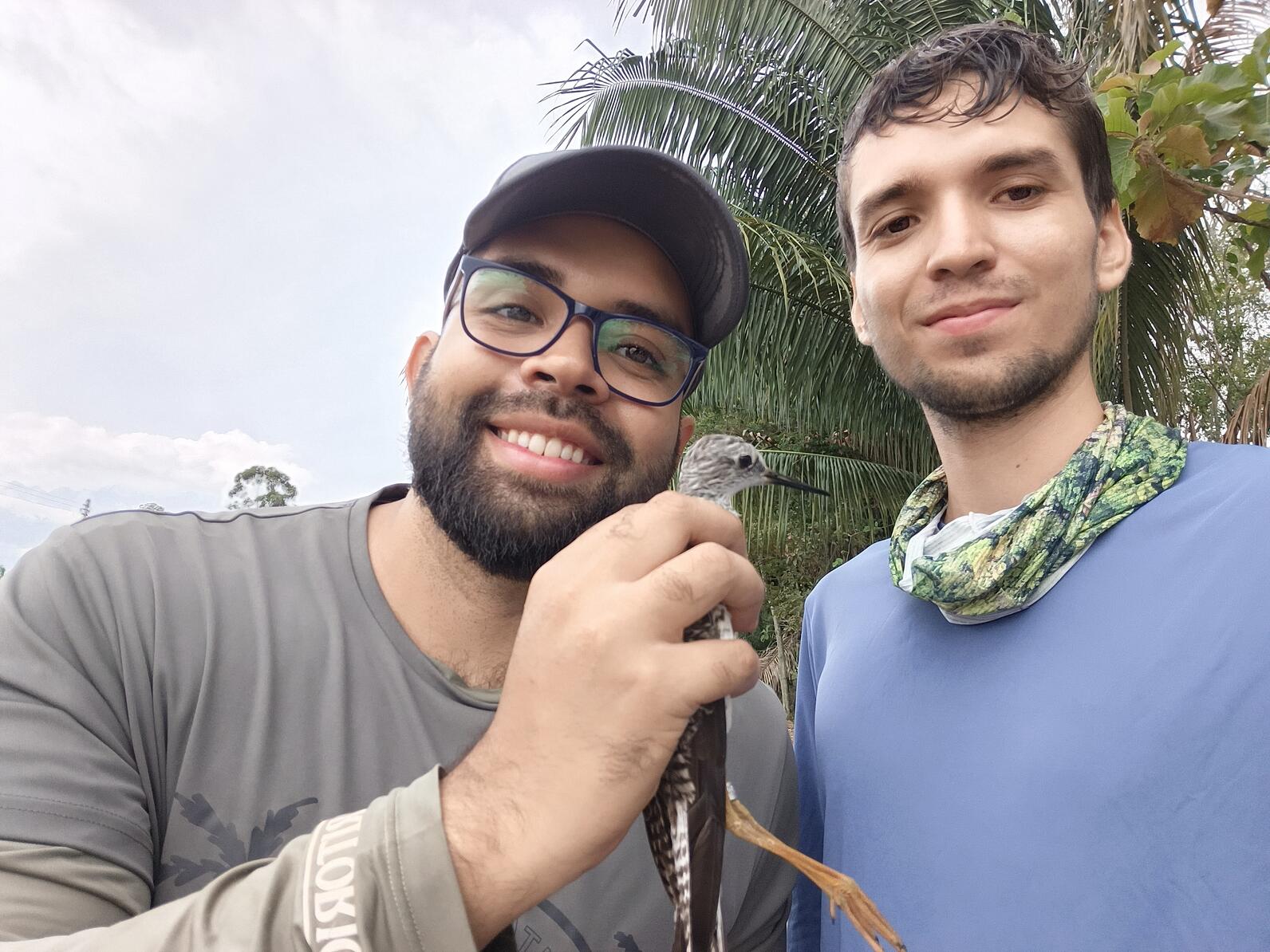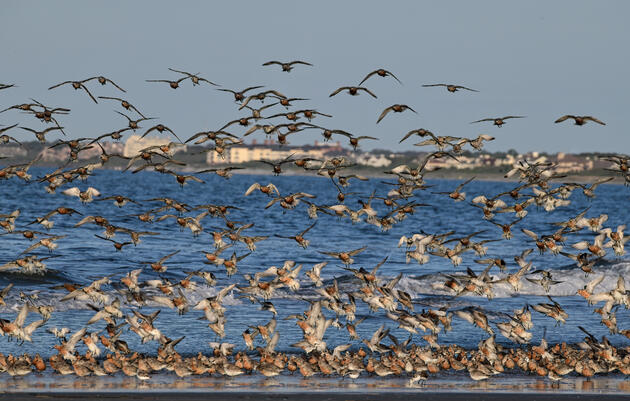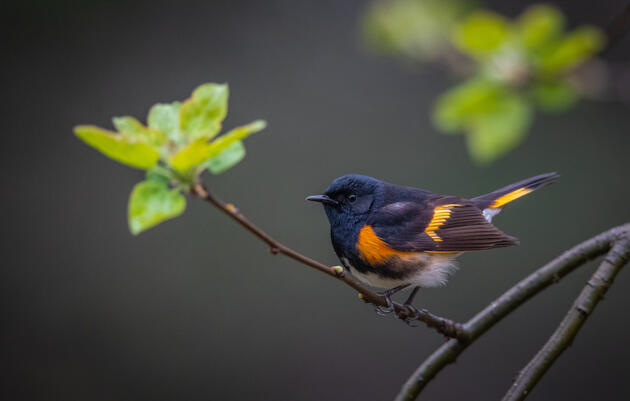Rolling along a back-country road in northern Collier County, Allyson Webb slows her buggy to a halt and surveys the sodden land near an ephemeral pond. As land stewardship manager for Audubon Florida at Corkscrew Swamp Sanctuary, she regularly monitors this location for invasive plants and other threats. On this warm August morning, she is excited to hear a familiar sound: tu-tuu, tu-tuu! She smiles and goes about her day, pleased to know that a Lesser Yellowlegs (Tringa flavipes), has made its presence known in “her” sanctuary.
Yellowlegs at Corkscrew Swamp Sanctuary
A gangly denizen of shallow waters, the Lesser Yellowlegs is rather nondescript—a mottled, gray-brown bird, it is about the size of a Mourning Dove with a long neck and long, slender beak. True to their namesake, Lesser Yellowlegs are easily recognizable by their stilt-like, bright yellow legs, but the annual migrations of these dainty birds are nothing short of extraordinary. Dozens of visitors and staff have reported sightings at the Sanctuary over the years, but a new tool is providing land managers like Webb and bird researchers everywhere with clues that increase their collective understanding of migration patterns and habitat needs.
Each spring, Lesser Yellowlegs breed and raise their young in the boreal forests of Northern Canada and Alaska. Once summer is over and the young can fly, they leave to spend winters in Florida, around the Gulf of Mexico, or as far south as the Argentinian pampas before returning the following spring. Some birds travel around 8,000 miles each year!
Lesser Yellowlegs rely on wetland habitats like marshes as feeding areas because they harbor a bountiful supply of delicious diving beetles and other water bugs. While some shallow wetlands are disappearing or drying out due to our changing climate, many others are being degraded, drained, or otherwise altered by development, making the protection of remaining wetland habitats like Corkscrew Swamp Sanctuary so important. These 13,000-plus protected acres serve as stopover sites or wintering destinations for countless migrating birds.
“At least a few times every year, I see Lesser Yellowlegs on the northern side of our property taking advantage of shallower wetlands for foraging,” says Webb.
Webb works to protect and manage wetland habitats that birds like Lesser Yellowlegs need along their annual journeys. Since 2022, a Motus Wildlife Tracking System station in the Sanctuary has connected this habitat to the Audubon network and other stations around the world. Its antenna picks up radio signals emitted from birds outfitted with tracking devices if their flight path takes them within seven miles of the station. Data collected by the station are uploaded to a database where researchers who use nanotags or other tracking technology can see the exact date and time when the tagged bird was near the station, essentially connecting the dots along their annual migration routes, as long as there are stations along the way.
Yellowlegs Tagging in Colombia

Jorge Velásquez, science director for Audubon Americas, oversees a research team in Cali, Colombia that has been studying Lesser Yellowlegs since 2022, in partnership with ICESI university and local NGO Selva.
“The purpose of our study is to get a better understanding of the management practices that improve habitat for birds in the Cauca Valley, and gain insights into their regional and hemispheric movements,” says Velásquez. Read more about that study.
Velásquez’ study included tagging ten Lesser Yellowlegs in 2022, and three more between November 2023 and April 2024. On April 27, 2024, Velásquez’s team took a video of a bird they tagged and released—watch that video here.
A Motus station in Missouri tracked this very bird on May 16 before it continued north to its breeding grounds, where Motus coverage is lacking. Shortly after midnight on August 2, it reappeared, flying past two Motus stations near Des Moines, Iowa, already on its southbound journey. Later that day, it passed near stations in Kentucky, Tennessee, and South Carolina. On August 4, the bird was recorded by the station at the Sanctuary.
Velásquez and his team continue to gather data on their yellowlegs. Of the ten birds his team tagged in 2022, seven returned that fall to the same wetland in the Cauca Valley, and five remained there until the following spring.
As of the end of August, our bird had not been picked up by another station south of Corkscrew Swamp Sanctuary, but Velásquez hopes it makes the return trip to the Cauca Valley for another winter. He is relieved to know that it and others like it have a decent chance of surviving the trip, thanks to the Audubon network of protected habitats across the Americas.
Learn more about the perilous journies that Lesser Yellowlegs undertake at the Bird Migration Explorer from Audubon's Migratory Bird Initiative and partners.








